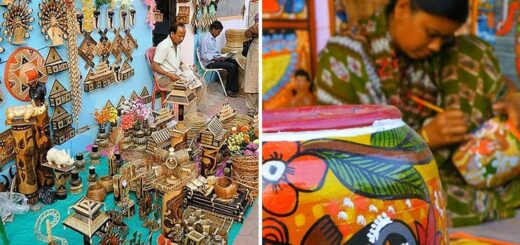National Current Affairs – UPSC/IAS Exams- 12th September 2019
Jeevan Kaushal Programme
Topic: Government Policies
In News: The University Grants Commission (UGC) announced the launch of a “life skills” (Jeevan Kaushal) programme in the curriculum for under-graduate courses across the country. Also, to make India the Skill Capital of the World, the Union Minister for Skill Development and Entrepreneurship (MSDE) has laid the foundation stone of the Indian Institute of Skills (IIS) at Mumbai.
More on the Topic:
- The new programme, which for 8 credit points, can be accommodated in any semester and is aimed at inculcating emotional and intellectual competencies in students develop verbal and non-verbal communication skills.
- The programme will comprise four courses – communication, professional, leadership and universal human values and skills. The programme will focus on team work, problem-solving and decision-making.
About Indian Institute of Skills:
- Indian Institute of Skills (IIS) are in line with Institutes of Eminence (IoEs) including IITs and IIMs. IIS aims to enrol 5,000 students per year with campus placement of 70% trainees.
- The Union Cabinet has given its nod to set up Indian Institute of Skills (IISs) in three locations of the country : Mumbai, Ahmedabad and Kanpur
- These institutes will be constructed & operated on a PPP (Public-Private Partnership) model and on a not-for-profit basis.
- It will facilitate learnings and training through strong industry connect in both the public and private sectors.
- It will help promote programs like Make in India, Skill India as well as to cater to the demand of Industry 4.0.
Source: Financial Express, PIB
World University Rankings 2020
Topic: Important Indices
In News: The TIMES Higher Education (THE) recently released its World University Rankings 2020 edition.
More on the Topic:
- In its 16th edition, THE’s World University Rankings 2020 included over 1,300 universities from 92 countries.
- 56 Indian institutions (up from 49 last year) made entry into the table this year, making India the fifth most-represented country in the list and the third in Asia (behind Japan and China).
- The University of Oxford retained the top position for the consecutive fourth year.
- The Indian Institute of Science (IISc) Bangalore topped the Indian universities on the list (although its ranking fell from the 251-300 group in 2019 to the 301-350 bracket in 2020). It now shares this position with the Indian Institute of Technology (IIT) Ropar- which made a debut entry into the list.
- It is the first time since 2012, that an Indian university has not featured in the top 300 of the ranking.
- Where we are best and worst: The best Indian institutions are generally characterized by relatively strong scores for teaching environment and industry income, but when it comes to an international outlook they perform poorly.
- The Indian government has strong ambitions to boost the global standing of its top universities and attract foreign students, academics and research collaboration. It now needs to back up these aspirations with high levels of investment, increasing global competition.
Source: The Hindu
Disaster Management Tool
Topic: Disaster Management
In News: Maharashtra has come up new disaster management tool with the help of the United States Trade and Development Agency (USTDA) to reduce the damage caused by floods, as recently witnessed in parts of western Maharashtra.
More on the Topic:
- USTDA had submitted the preliminary report to the government in August. It stated that over 3,000 people have died in floods in the MMR while near 1,50,000 fell sick after flooding.
- The government has agreed to the preliminary report, which assesses the losses, and points to the lack of flood management in the region as a cause of concern.
- According to the report, vulnerable disaster-prone areas are not being identified, new infrastructure projects are not taken up with hazard levels in mind, among other loopholes in the system.
- The report recommends that the government implement a flood management and vulnerability risk framework through an integrated technology platform.
- It suggested to collect and disseminate data, and applay during and post disaster support while also devising a disaster vulnerability risk index.
- A similar tool was designed earlier in Brazil and Thailand, on GIS-based flood maps and zoning for early warning and forecasts.
- The system has been implemented in the Thailand Chao Phraya River Basin where flood management was improved in 1,60,000 sq. km.
- A real-time decision support system provides short and medium-term flood forecasting, reducing the damaging impact of floods.
- A vulnerability index as part of the tool could include a measurement framework with key indicators and reliability assessment to respond to data quality issues.
- The index will comprise three key components: assessment of vulnerable zones, monitoring of flood impact and the undertaking of continuous assessment.
Model Mains Question: Comment on the technological aids in disaster management reduction.
Source: The Hindu
Indigenous Anti-tank Missile
Topic: Science and Technology
In News: The Defence Research and Development Organisation (DRDO) has successfully flight tested indigenously developed Man-Portable Antitank Guided Missile (MPATGM).
More on the Topic:
- This is third-generation anti-tank guided missile (ATGM), that has been developed indigenously by DRDO in partnership with VEM technologies Ltd.
- It comes with a high-explosive anti-tank (HEAT) warhead. The missile is incorporated with state-of-the-art Infrared Imaging Seeker along with advanced avionics.
- The strike range of this missile is of 5 kilometres and weighs around 14.5 kilograms, a feature that is critical to maintain portability. It has the capability to be fired from shoulder and can be used during the day and night.
Source: The Hindu
Sixth Schedule
Topic: Indian Polity
In News: The National Commission for Scheduled Tribes (NCST) has recommended that the Union Territory (UT) of Ladakh be included in the Sixth Schedule of the Constitution.
More on the Topic:
- It is estimated that more than 90% of Ladakh’s population is tribal. The primary Scheduled Tribes (STs) in Ladakh are Balti Beda, Bot (or Boto), Brokpa (or Drokpa, Dard, Shin), Changpa, Garra, Mon and Purigpa.
- Thereby several distinct cultural heritages of these communities in Ladakh region needs to be preserved and promoted.
- Prior to the creation of Union Territory of Ladakh, people in Ladakh region had certain agrarian rights including right on land which restricted people from other parts of the country to purchase or acquire land in Ladakh.
- Inclusion in the sixth schedule will help in democratic devolution of powers in the region and will also enhance the transfer of funds for speedy development of the region.
About Sixth Schedule:
- The Constitution, under Sixth Schedule, contains special provisions for the administration of tribal areas in the four north-eastern states of Assam, Meghalaya, Tripura and Mizoram.
- Autonomous Districts: The tribal areas in these four states have been constituted as autonomous districts. The governor is empowered to organise and re-organise the autonomous districts.
- The acts of Parliament or the state legislature do not apply to autonomous districts or apply with specified modifications and exceptions.
- The power of direction, in this regard, lies either with the President or Governor.
- District Council: Each autonomous district has a district council consisting of 30 members, of whom four are nominated by the Governor and the remaining 26 are elected on the basis of adult franchise.
- The elected members hold office for a term of five years (unless the council is dissolved earlier) and nominated members hold office during the pleasure of the governor.
- Each autonomous region also has a separate regional council.
- Powers of the Council: The district and regional councils administer the areas under their jurisdiction.
- They can make laws on certain specified matters like land, forests, canal water, shifting cultivation, village administration, the inheritance of property, marriage and divorce, social customs and so on. But all such laws require the assent of the Governor.
- They can constitute village councils or courts for trial of suits and cases between the tribes. They hear appeals from them. The jurisdiction of the high court over these suits and cases is specified by the governor.
- The district council can establish, construct or manage primary schools, dispensaries, markets, ferries, fisheries, roads and so on in the district.
- They are empowered to assess and collect land revenue and to impose certain specified taxes.
Source: PIB
Cryodrakon Boreas
Topic: Environment and Ecology
In News: Paleontologists have identified a new species, named it ‘Cryodrakon boreas’ – a giant flying reptile.
More on the Topic:
- With a wingspan of over 10 metres, it is believed to have flown over the heads of dinosaurs.
- It could be one of the largest flying animals lived over 77 million years ago in today’s western Canada.
- Its remains were, discovered 30 years ago from the Dinosaur Park Formation located in Alberta.
- A new study has concluded that the remains belong to a new species, which is the first pterosaur to be discovered in Canada.
- In terms of habitat and lifestyle, it would have lived in a tropical environment, feasting on small dinosaurs and lizards.
Source: The Hindu














